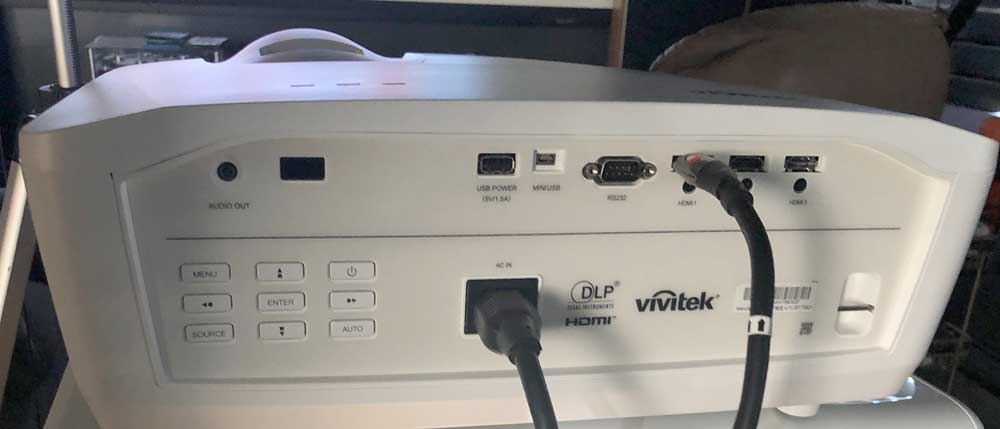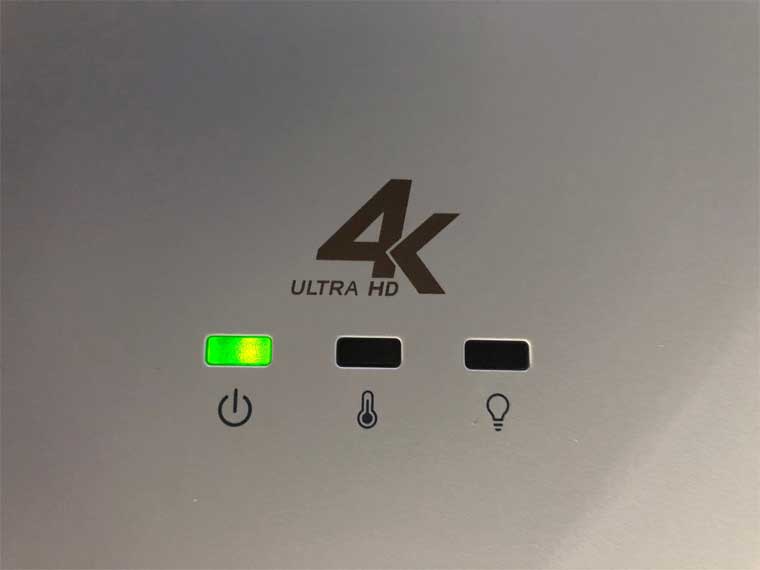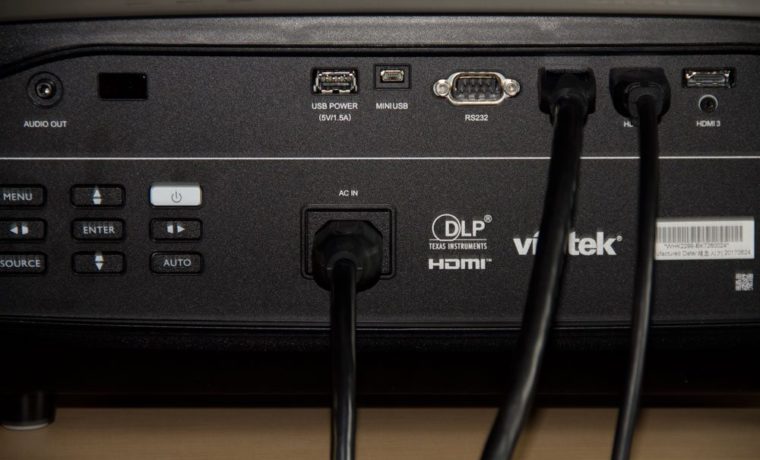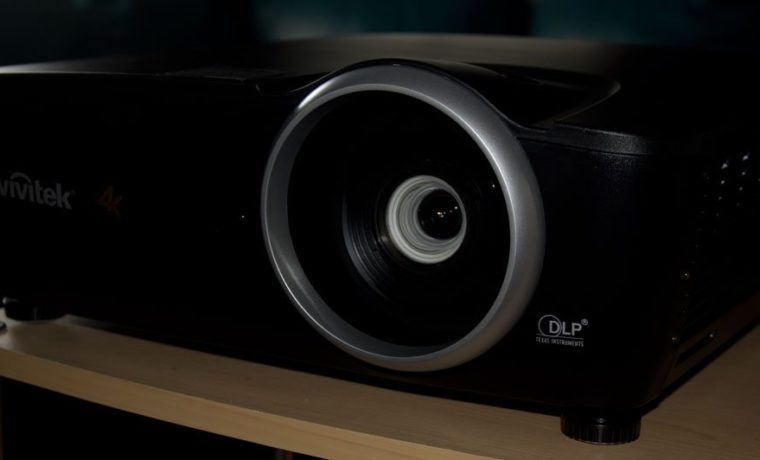Our look at the physical Vivitek HK2288 begins up front. The recessed 1.5:1 manual zoom lens is offset to the right (if you are facing the projector). Just to its left is the front IR sensor for the remote control. Note that the original sample unit had a problem possibly with the front IR sensor, but even this unit isn’t great, either, but probably will be just fine in most setups.
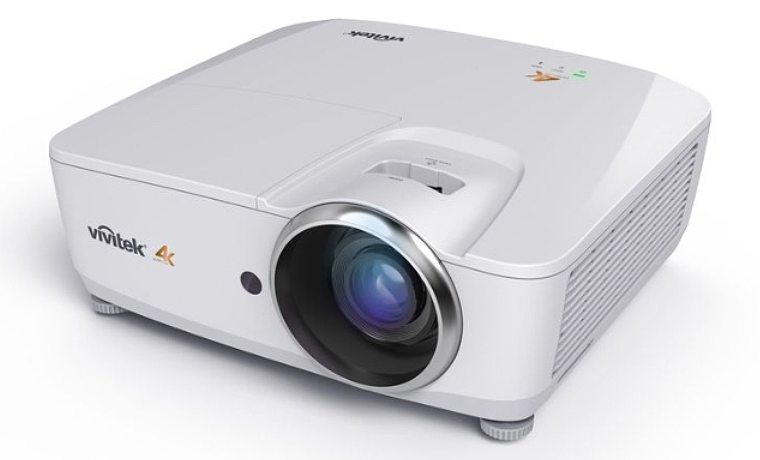
The HK2288 is finished in white. The otherwise identical HK2299 comes in black.
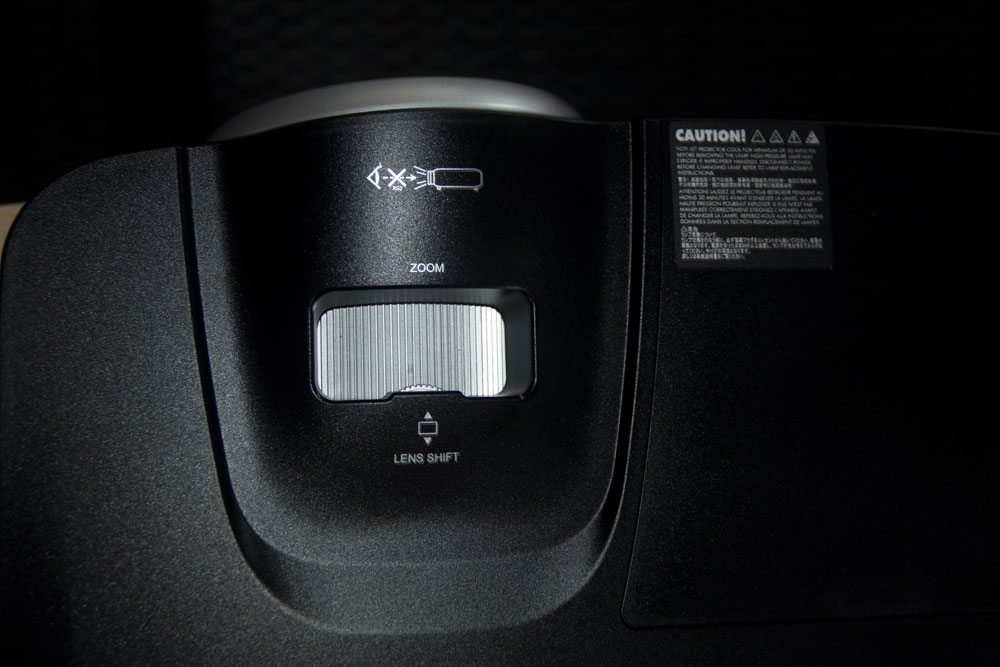
A top down look at the recessed lens control area of the HK2288, HK2299 projectors. Seen here: Zoom and lens shift. (Focus control is in the front).
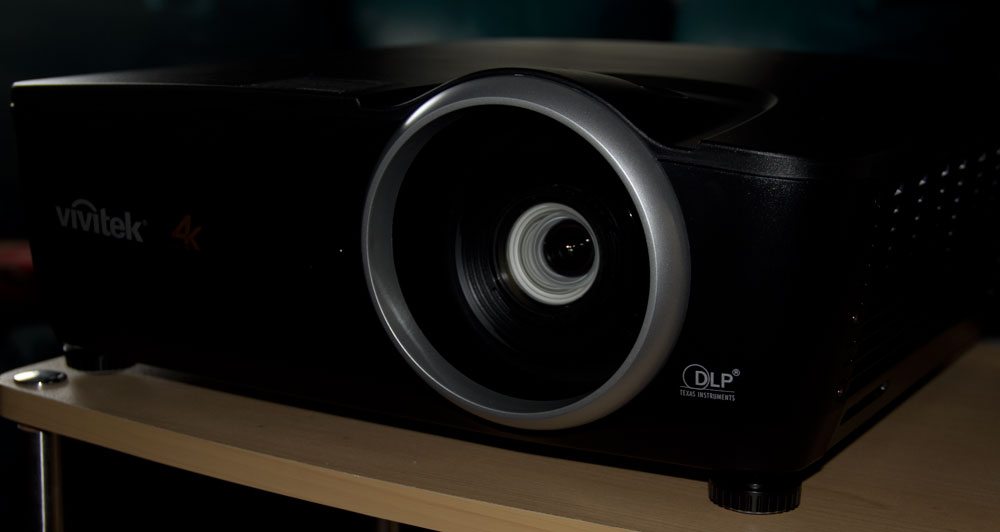
The 1.5:1 manual zoom lens performs well. It offers a fairly typical amount of zoom range. with most 4K UHD projectors offering between 1.2:1 and 1.6:1 zooms.
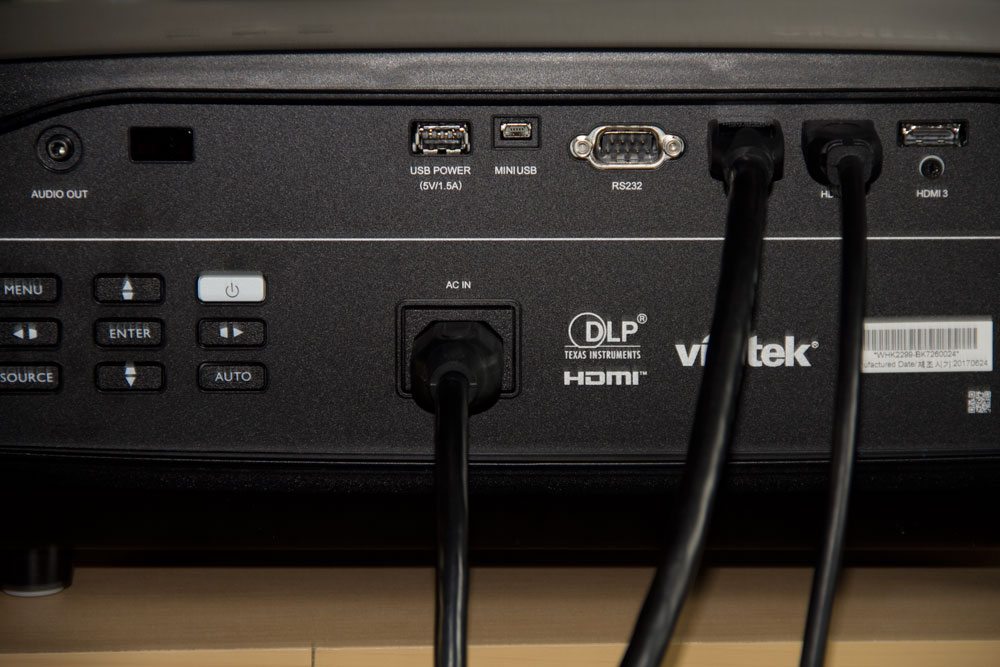
A healthy selection of inputs, including a healthy number of HDMI inputs (3).
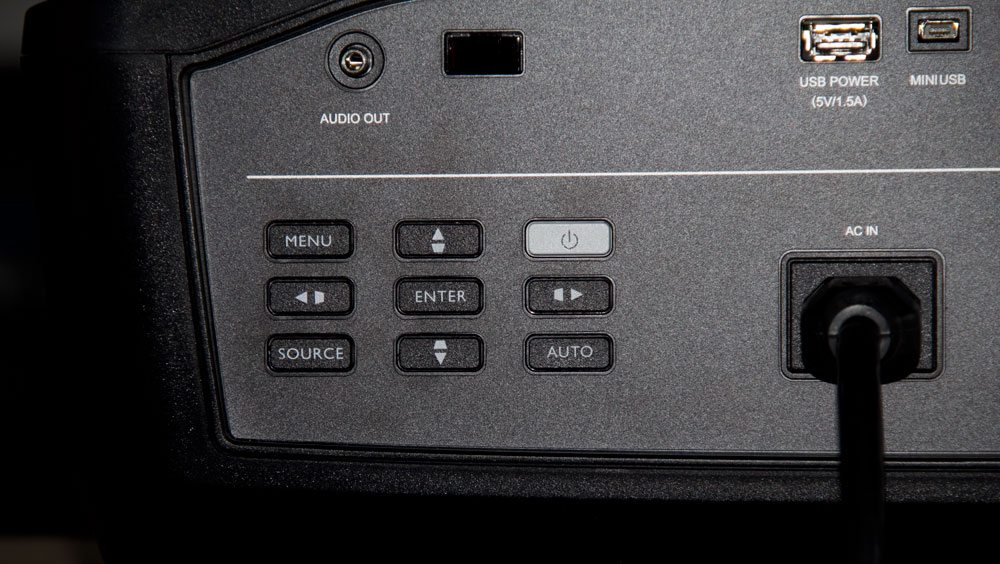
The Vivitek HK2299, HK2288 Control panel. It is located on the back of the projector
❮
❯
Below the front are two adjustable thread front (the rear feet are fixed). Hot air vents out the left side (if you are facing the projector). There is a tab around the lens for the focus, while on the top, behind the lens, and also recessed, are the Zoom and Lens Shift controls. The lens shift dial provides a modest amount of lens shift, but enough so that it can be very handy.
On the top of the HK2288 – and the HK2299 – you will also find the usual three LED indicator lights for Power, Temp, and Lamp.
Pretty much everything else is found on the back of this Vivitek – that is, the Control Panel and all the Inputs and other connectors.
While many projectors put the control panel on the top, Vivitek goes with the back which, also like control panels on the side, tend to be preferred by installers. That makes sense, as I would expect a lot of these HK2288s and HK2299 projectors will be ceiling mounted.



